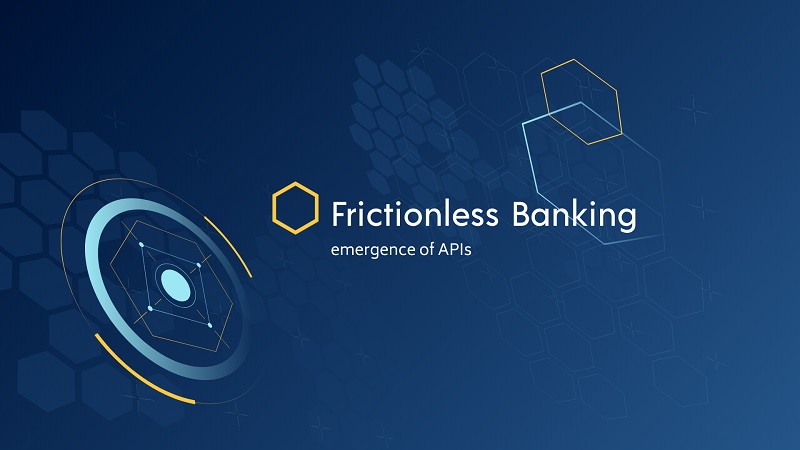In recent years, Application Programming Interfaces (APIs) have emerged as a transformative force in the banking sector, driving innovation, efficiency, and collaboration between financial institutions and third-party service providers. APIs allow banks to integrate, share, and exchange data with external platforms, enabling seamless and secure interactions between financial systems.
This trend is reshaping the way banking services are delivered, moving towards a more open, interconnected, and factionless financial ecosystem. The rise of Open Banking, fueled by APIs, is dismantling traditional silos in the financial industry, fostering collaboration and creating customer-centric financial solutions that are more flexible and accessible.
What Are APIs in Banking?
At its core, an API is a set of tools, protocols, and definitions that allow software applications to communicate with each other. In the context of banking, APIs enable financial institutions to expose their services and data to third-party developers. It enables communication between front-end and back-end software components to build applications and services on top of the bank’s existing infrastructure.
This creates opportunities for financial technology (FinTech) companies, payment processors, insurance providers, and even non-financial platforms (such as e-commerce websites) to integrate banking functions seamlessly into their own services.
Key characteristics of APIs in banking include:
- Data Exchange: APIs facilitate the secure exchange of financial data between banks, third-party service providers, and customers.
- Service Integration: APIs allow third parties to embed banking services such as payments, loans, account management, and investments into non-banking platforms.
- Interoperability: APIs provide a standardized way for different systems and platforms to work together, ensuring compatibility and efficiency.
The Classification of Bank APIs
There is a variety of APIs designed for various software architecture needs and purposes. The classification of bank APIs can be drawn based on the purpose of the uses. In broad scale, the bank APIs are used for two major purpose – accessibility and communication.
Accessibility refers to how APIs are made accessible to both users and developers. This determines access capability, conditions with level of authorization or restriction. On the other hand, communication APIs focus is on how the APIs interact and exchange data between different systems or platforms. This involves the type of communication protocol or method used for data transfer.

The Role of APIs in Open Banking
The emergence of Open Banking is a key driver behind the growing adoption of APIs in banking. Open Banking refers to the practice of allowing third-party developers to access banking data and services through APIs, with the consent of the customer. In the context of APIs role in open banking, APIs are no longer a tech essential now. It becomes business priority for banks. APIs help banks to diversify their offerings, tap into new revenue streams and deliver enhanced customer experiences.
Key Features of Open Banking APIs:
- Account Aggregation: APIs allow users to view all their financial accounts from different banks in a single platform, making it easier to manage finances, track spending, and plan budgets.
- Payment Initiation: Third-party providers can initiate payments directly from a customer’s bank account through APIs, streamlining payment processes for e-commerce, utility bill payments, and peer-to-peer (P2P) transactions.
- Data Sharing: APIs facilitate secure sharing of customer transaction data with third-party applications that provide personal finance management, lending, or investment services.
By enabling data portability and open access to financial services, APIs are breaking down the traditional silos in banking and empowering FinTech companies to build innovative products that cater to the evolving needs of consumers.
Making Finance Factionless: The API-Driven Revolution
The rise of APIs in banking is making finance factionless, meaning it is removing the boundaries that previously existed between banks, financial services, and consumers. This new paradigm allows seamless access to financial services across multiple platforms, creating a more fluid and connected financial ecosystem.

1. Seamless Integration of Financial Services
APIs enable third-party applications, such as FinTech platforms, e-commerce websites, or ride-hailing apps, to integrate financial services directly into their ecosystems. For example:
- A ride-sharing app can integrate a payment API to allow users to pay for rides directly from their bank accounts without using a separate app.
- An e-commerce platform can offer embedded financing through a bank’s lending API, enabling consumers to opt for buy-now-pay-later (BNPL) services at checkout.
This factionless approach allows users to access banking services without leaving their primary platforms, providing convenience and a more frictionless experience.
2. Personalized Financial Solutions
APIs make it easier for third-party developers to offer personalized financial solutions based on a customer’s unique needs and behavior. With access to real-time financial data via APIs, FinTech platforms can offer:
- Tailored investment portfolios based on spending habits and financial goals.
- Automated savings plans linked to customers’ income and spending patterns.
- Custom loan offers using alternative credit scoring models that leverage transactional data and other alternative metrics.
This personalization fosters better customer engagement and loyalty, as services are tailored to meet specific needs rather than offering one-size-fits-all solutions.
3. Fostering Financial Inclusion
APIs play a crucial role in promoting financial inclusion, especially in developing markets where access to traditional banking services may be limited. Through APIs, mobile banking platforms, digital wallets, and microfinance services can offer:
- Access to credit for individuals with thin or no credit histories by using alternative credit scoring via API-powered data integration.
- Mobile-based banking services, such as account management, money transfers, and bill payments, for individuals in remote areas where traditional banking infrastructure is scarce.
- Real-time payments for workers in the gig economy who rely on instant access to their earnings without waiting for bank transfers.
Benefits of APIs in Banking
The adoption of APIs in banking provides numerous benefits for banks, third-party developers, and consumers alike. Here are some of the most significant advantages:
1. Enhanced Innovation and Competition
APIs encourage competition by allowing third-party developers to build innovative financial products that challenge traditional banking services. This competition drives innovation, resulting in better services for consumers. For example, FinTech startups can build specialized apps for budgeting, expense tracking, or wealth management by integrating with a bank’s API infrastructure.
2. Improved Customer Experience
By enabling real-time data sharing and seamless transactions, APIs improve the customer experience. Consumers can access multiple banking services—such as transferring money, checking balances, or applying for loans—without leaving the app or platform they are using. This frictionless banking experience is key to customer satisfaction in an increasingly digital world.
3. Cost Savings and Operational Efficiency
For banks, APIs offer a way to reduce operational costs by automating processes and reducing the need for manual intervention. For example, APIs can automate payment processing, loan approvals, and identity verification, freeing up human resources and improving efficiency. Additionally, APIs allow banks to integrate with third-party services without having to build these services from scratch, leading to significant cost savings.
4. Expanding Revenue Streams
APIs open up new revenue streams for banks by enabling B2B partnerships with FinTechs and other businesses. By providing access to their financial services through APIs, banks can charge fees for API usage, create value-added services, and expand their reach into new customer segments. This makes APIs a valuable tool for monetization and growth in the digital banking era.
Challenges and Risks of API Adoption in Banking
While the benefits of APIs in banking are significant, there are challenges and risks that financial institutions must navigate:
1. Data Security and Privacy
With the sharing of sensitive financial data through APIs, ensuring data security and privacy is a critical concern. Banks must implement robust security protocols, including encryption, tokenization, and multi-factor authentication, to protect customer data from breaches and unauthorized access. Additionally, compliance with regulations such as GDPR and PSD2 is crucial to avoid legal risks.
2. Third-Party Risks
By opening up their systems to third-party providers, banks expose themselves to potential risks stemming from third-party vulnerabilities. If a third-party application experiences a data breach or service disruption, the bank’s reputation and customer trust could be negatively impacted. Establishing strong governance and monitoring protocols for third-party partners is essential to mitigate these risks.
3. Legacy Infrastructure
Many traditional banks still rely on legacy IT systems, which may not be fully compatible with modern APIs. The transition to an API-driven infrastructure can be complex and costly, requiring significant investment in technology upgrades and system integrations. However, the long-term benefits of API adoption often outweigh the initial challenges.
The Future of API-Driven Banking
As APIs continue to gain traction in the banking sector, the future of finance looks increasingly open, collaborative, and interconnected. Here are some key trends to watch:
1. Embedded Finance
The rise of APIs is paving the way for embedded finance, where banking services are seamlessly integrated into non-financial platforms. In the future, consumers may conduct banking activities such as securing loans, making payments, or managing investments through their favorite e-commerce or social media platforms without ever visiting a bank.
2. Banking-as-a-Service (BaaS)
Banking-as-a-Service (BaaS) models, enabled by APIs, will allow non-banking companies to offer financial services under their own brand. This will lead to greater competition and the democratization of financial services, as businesses across industries—such as retailers, airlines, and telecoms—begin to offer banking services to their customers.
3. Greater Financial Inclusion
APIs will continue to drive financial inclusion by allowing more people—especially those in underserved or remote areas—to access essential financial services. Mobile banking and digital wallet platforms powered by APIs will help bridge the gap for the unbanked and underbanked, providing them with affordable and accessible banking solutions.
Concluding Remarks
The emergence of APIs in banking is breaking down the barriers between traditional financial institutions and third-party developers, creating a factionless financial ecosystem where services can be accessed anywhere, anytime. As APIs enable more seamless, personalized, and accessible financial solutions, both consumers and businesses stand to benefit from a more open and collaborative banking landscape. Banks that embrace API-driven innovation will be well-positioned to thrive in the future of finance, where flexibility, interoperability, and customer-centric services will define success.









